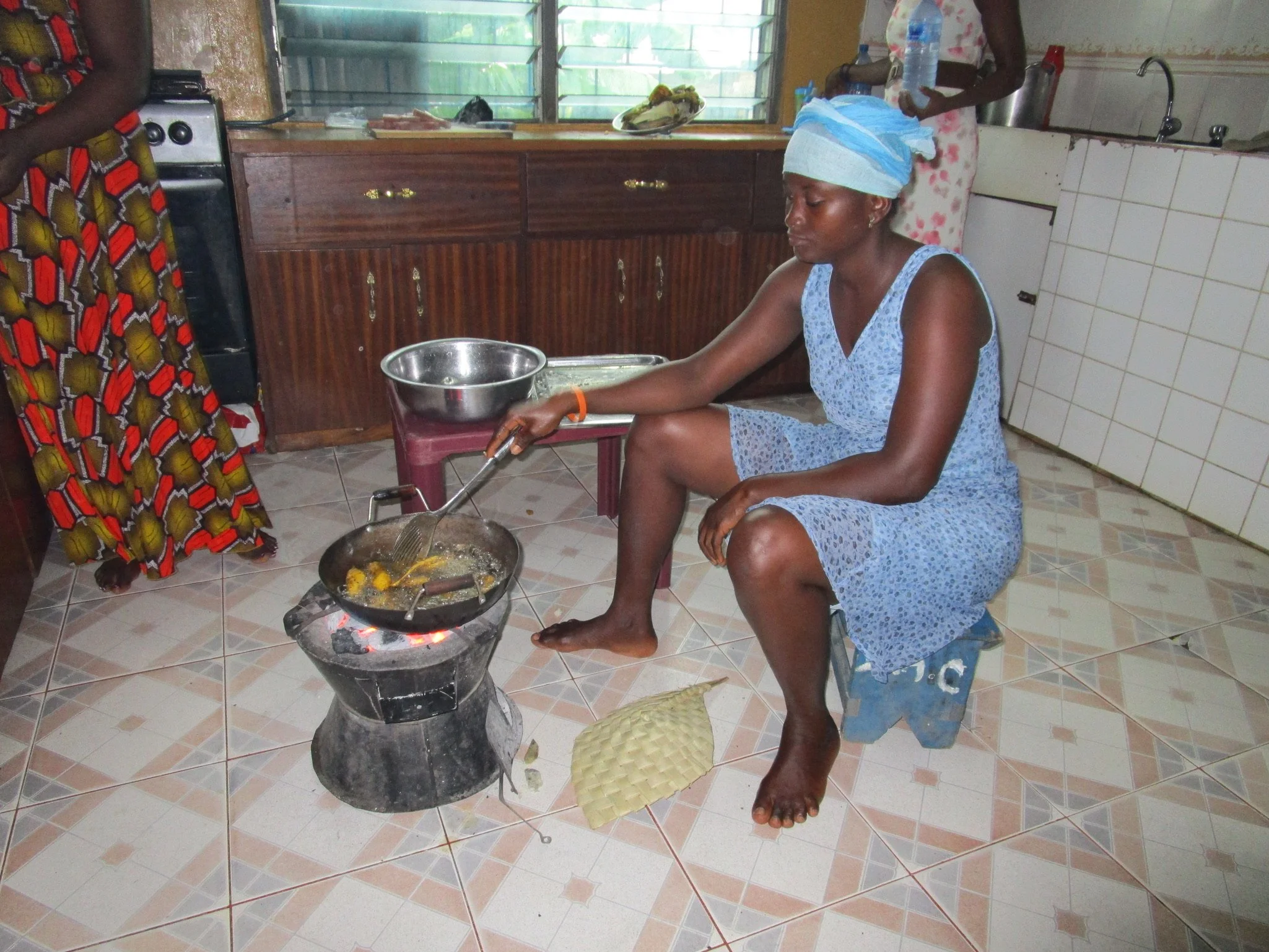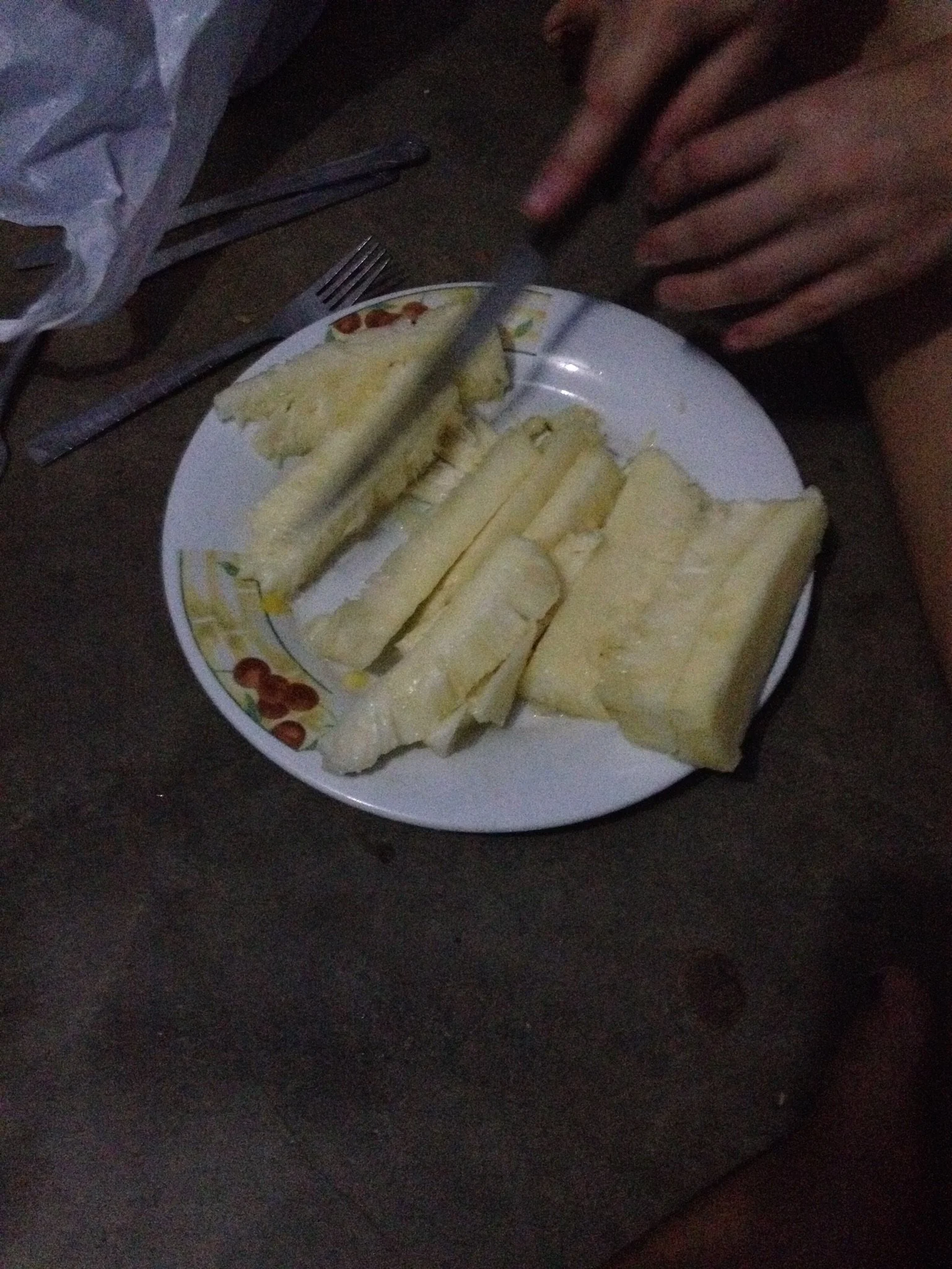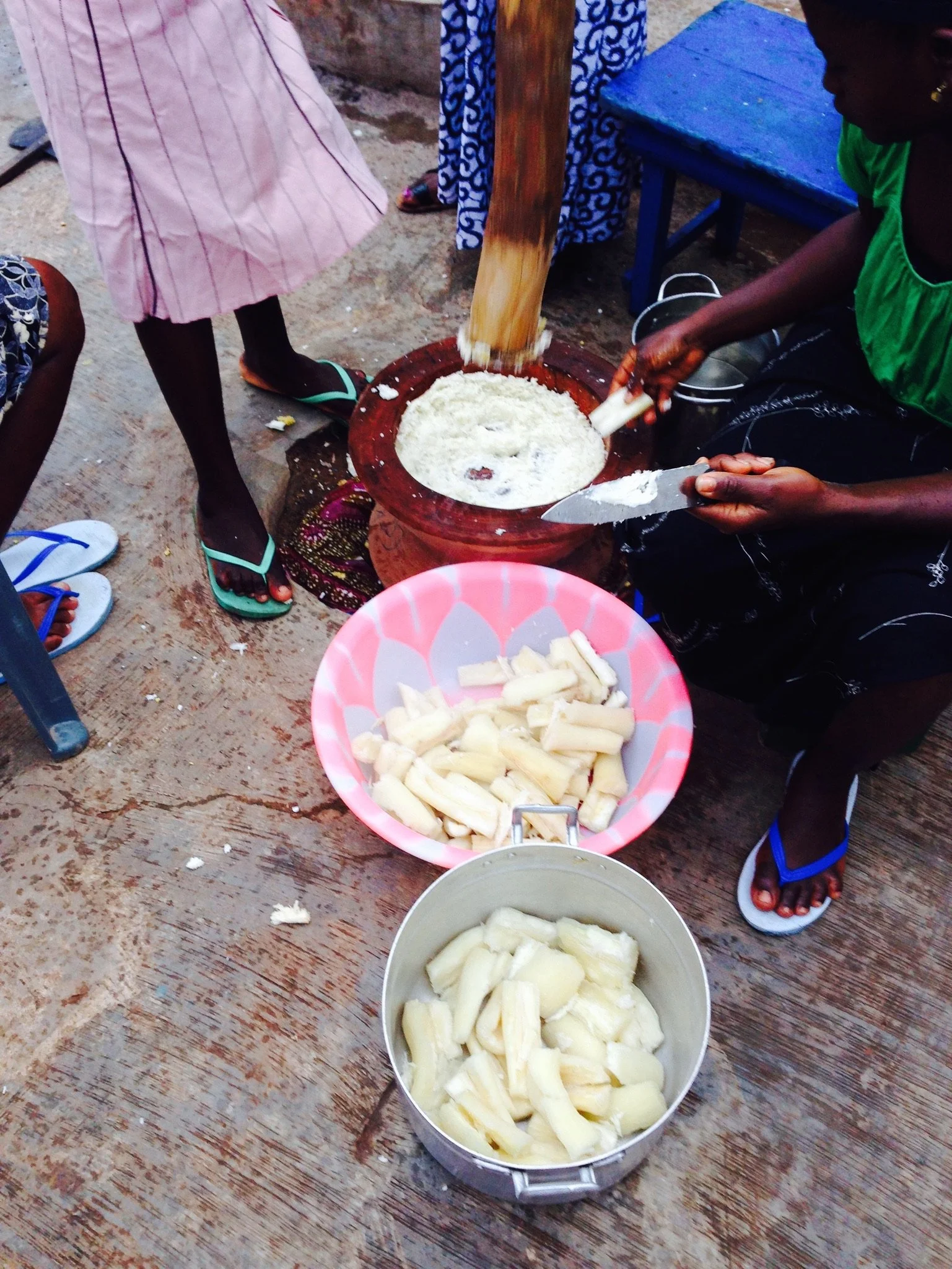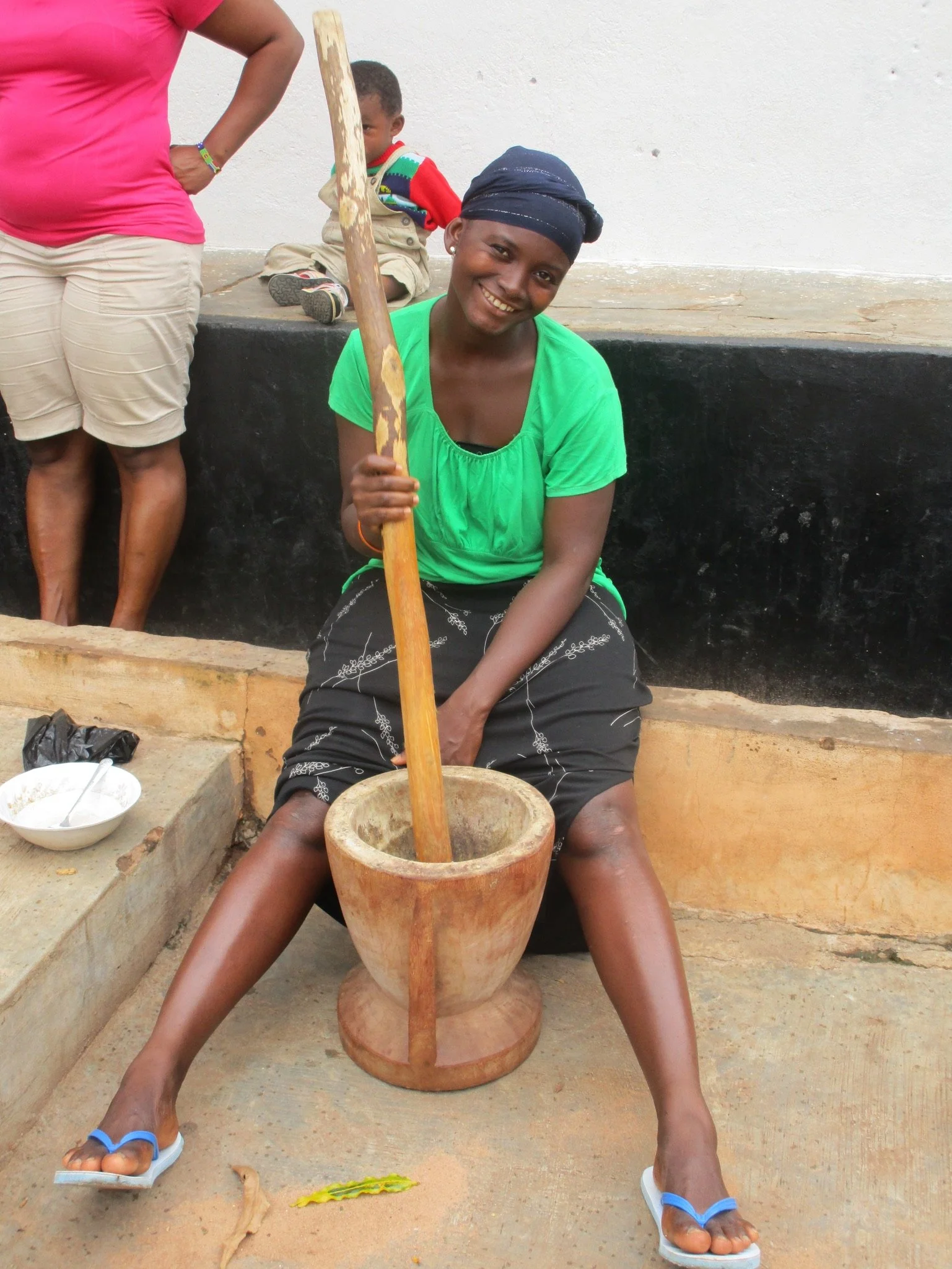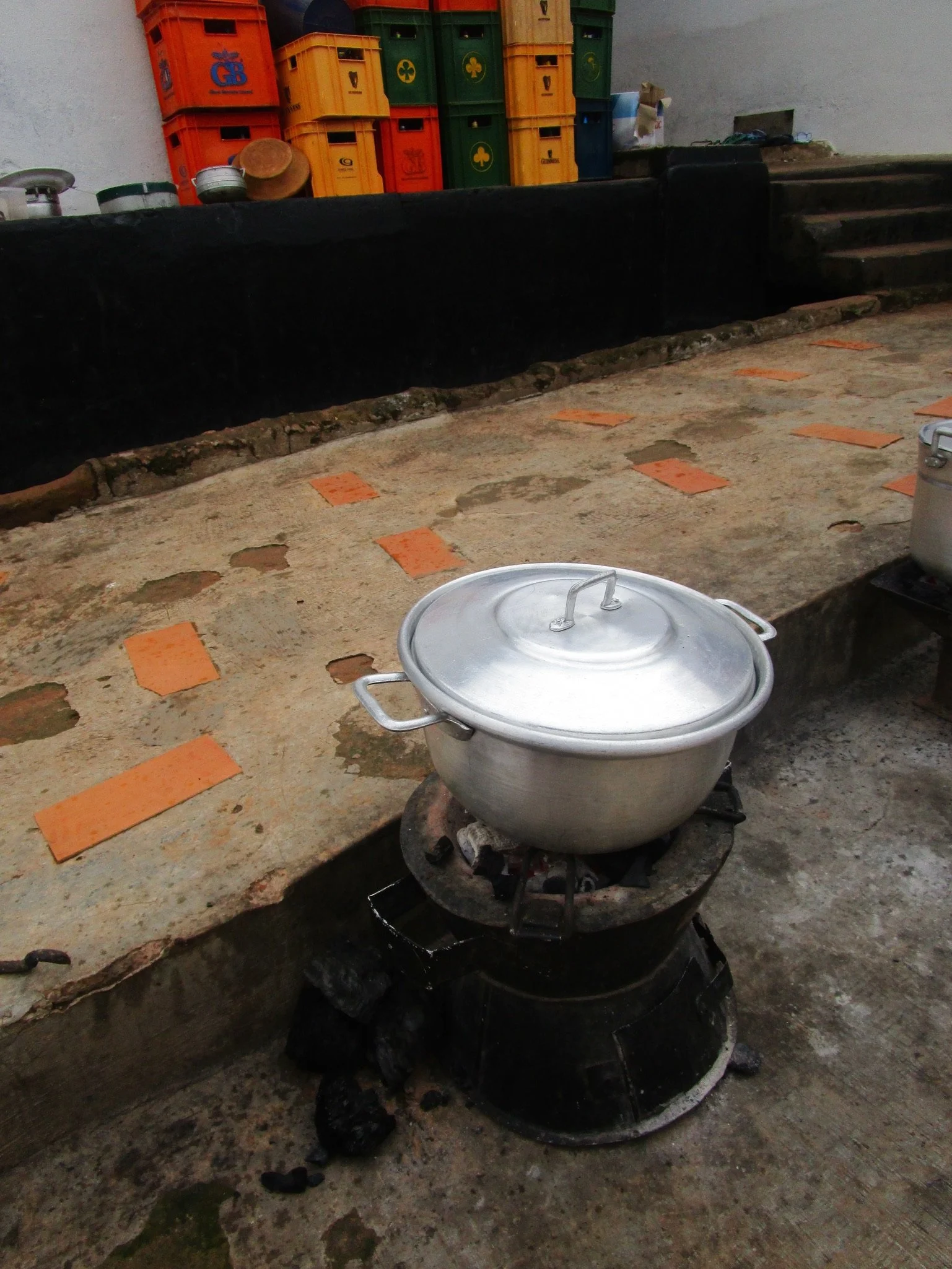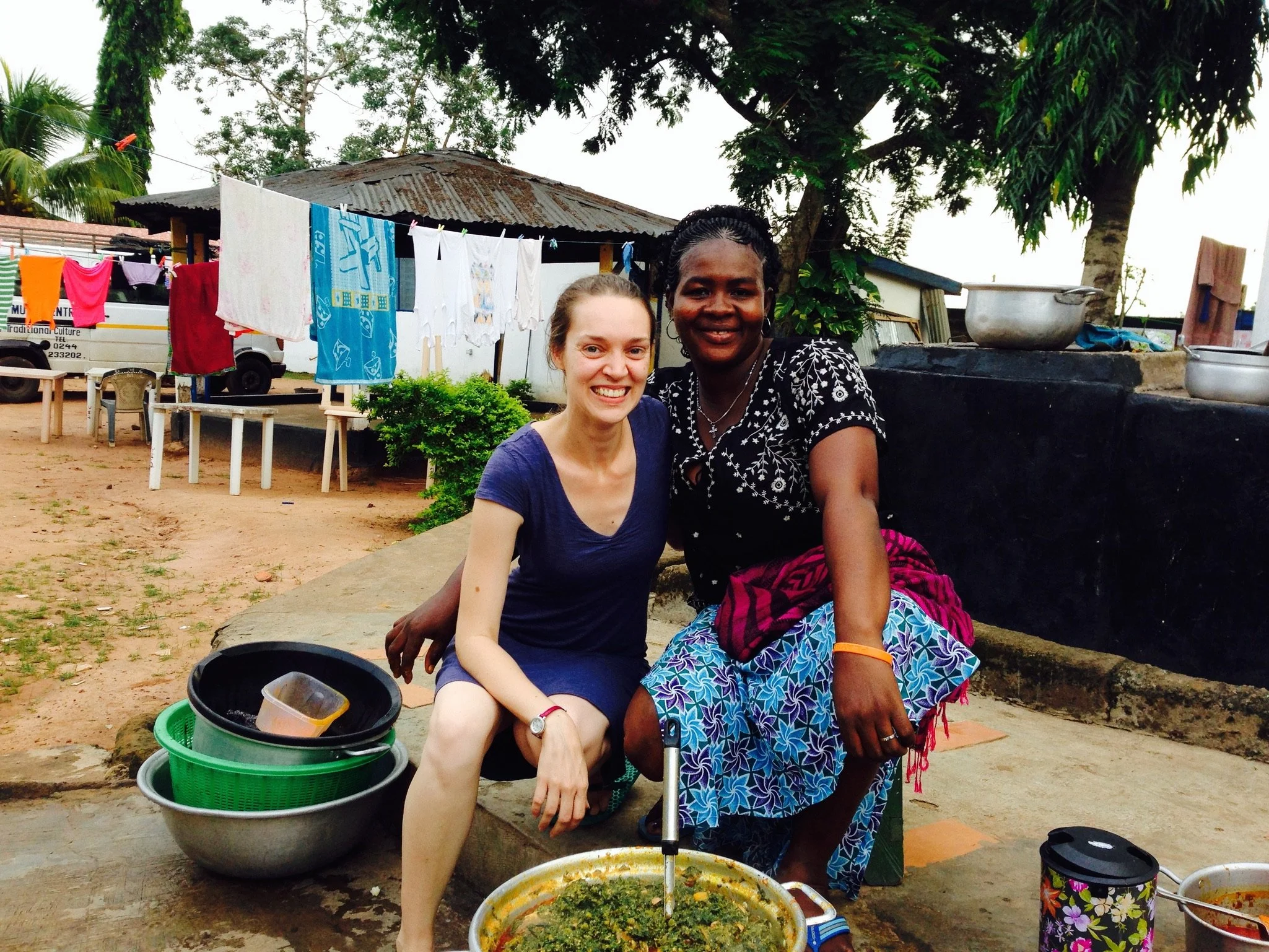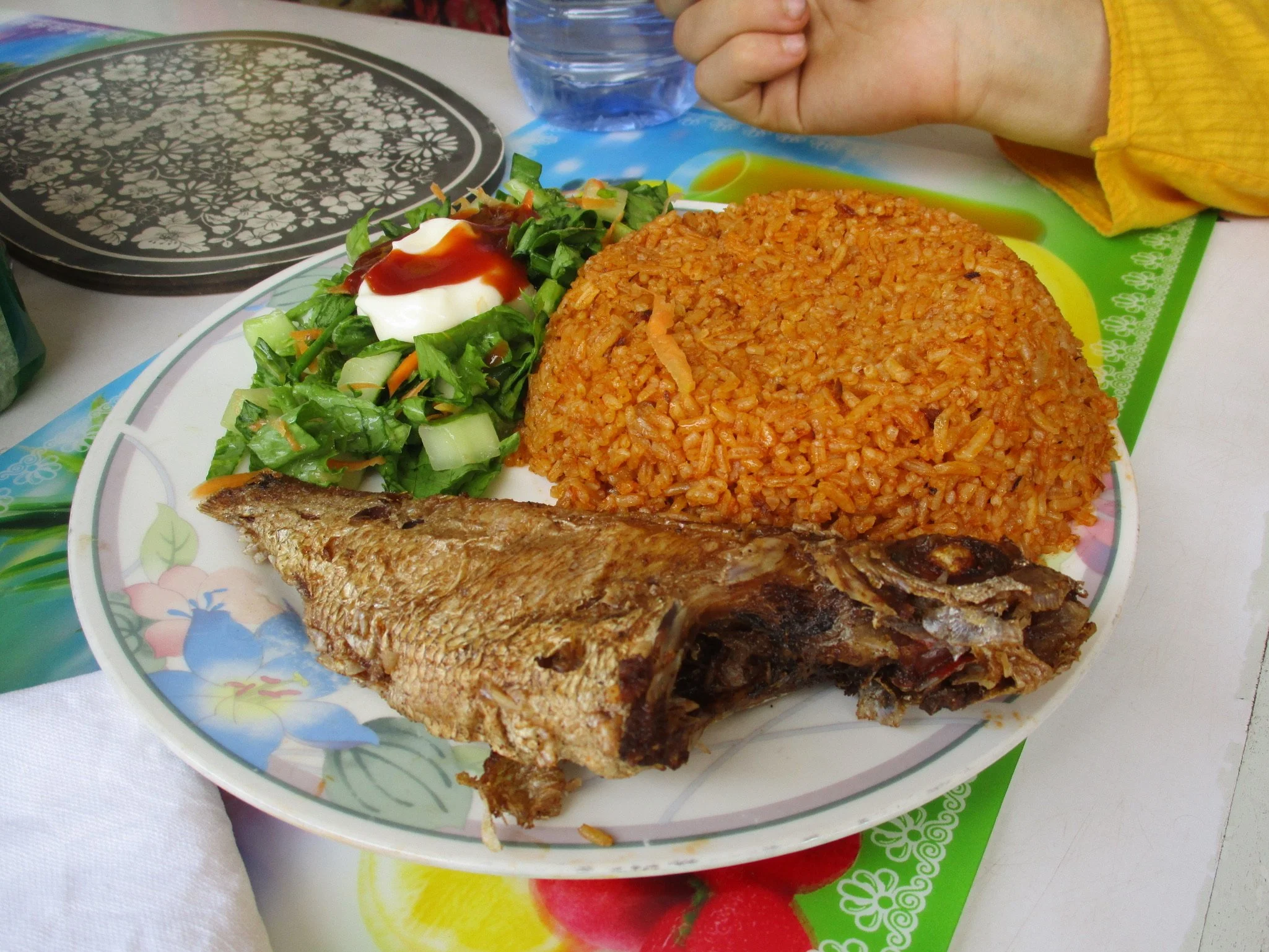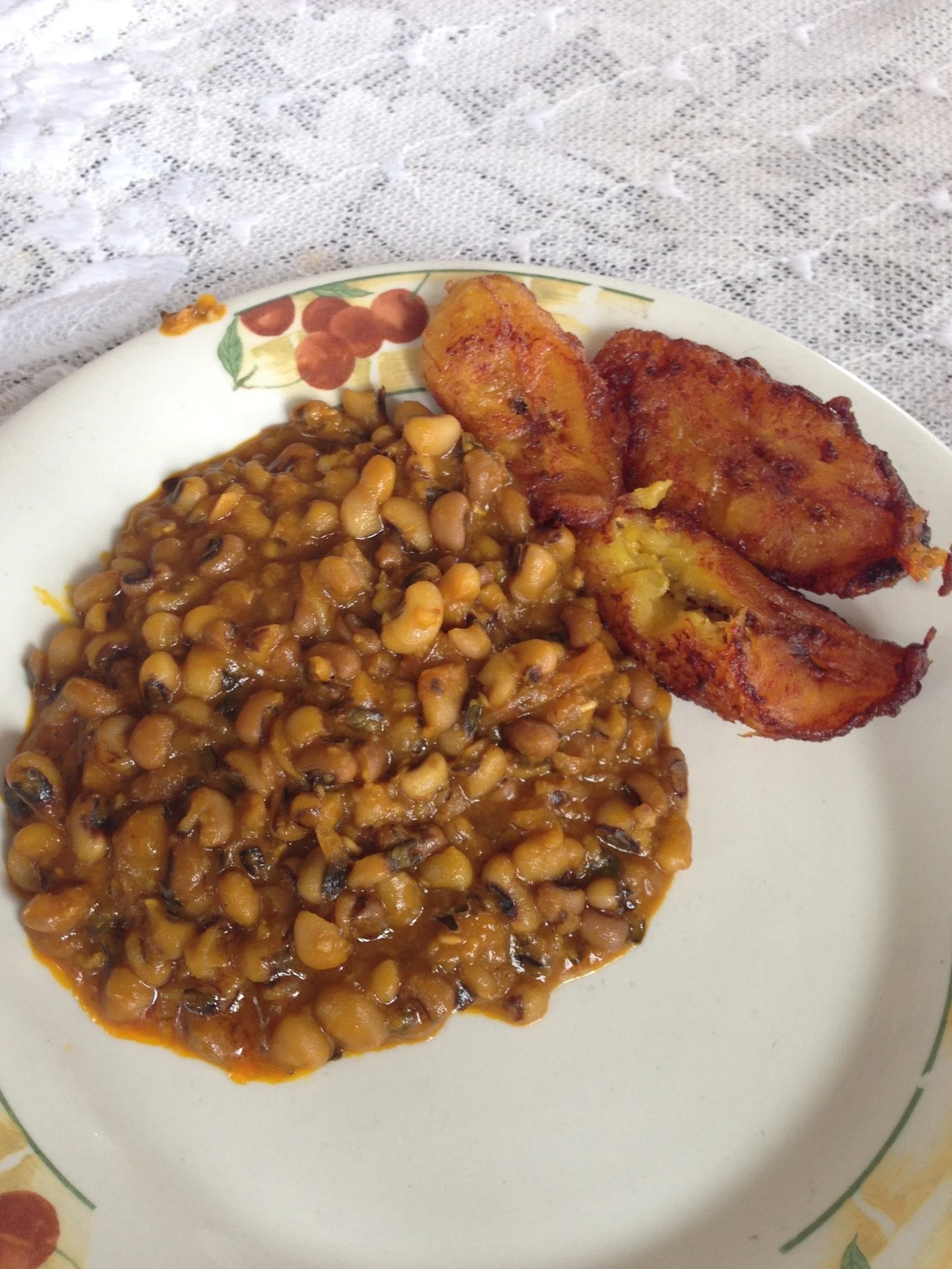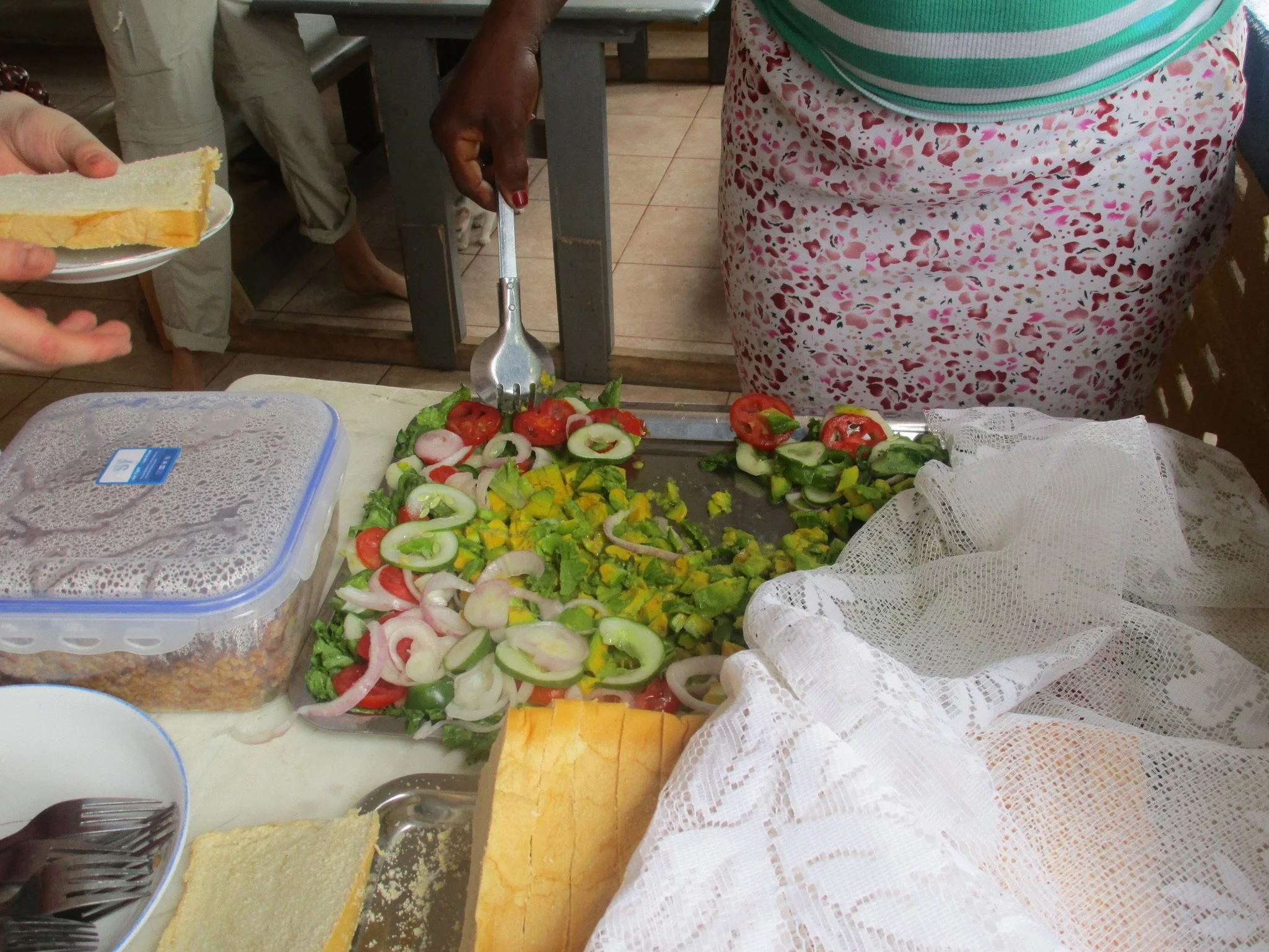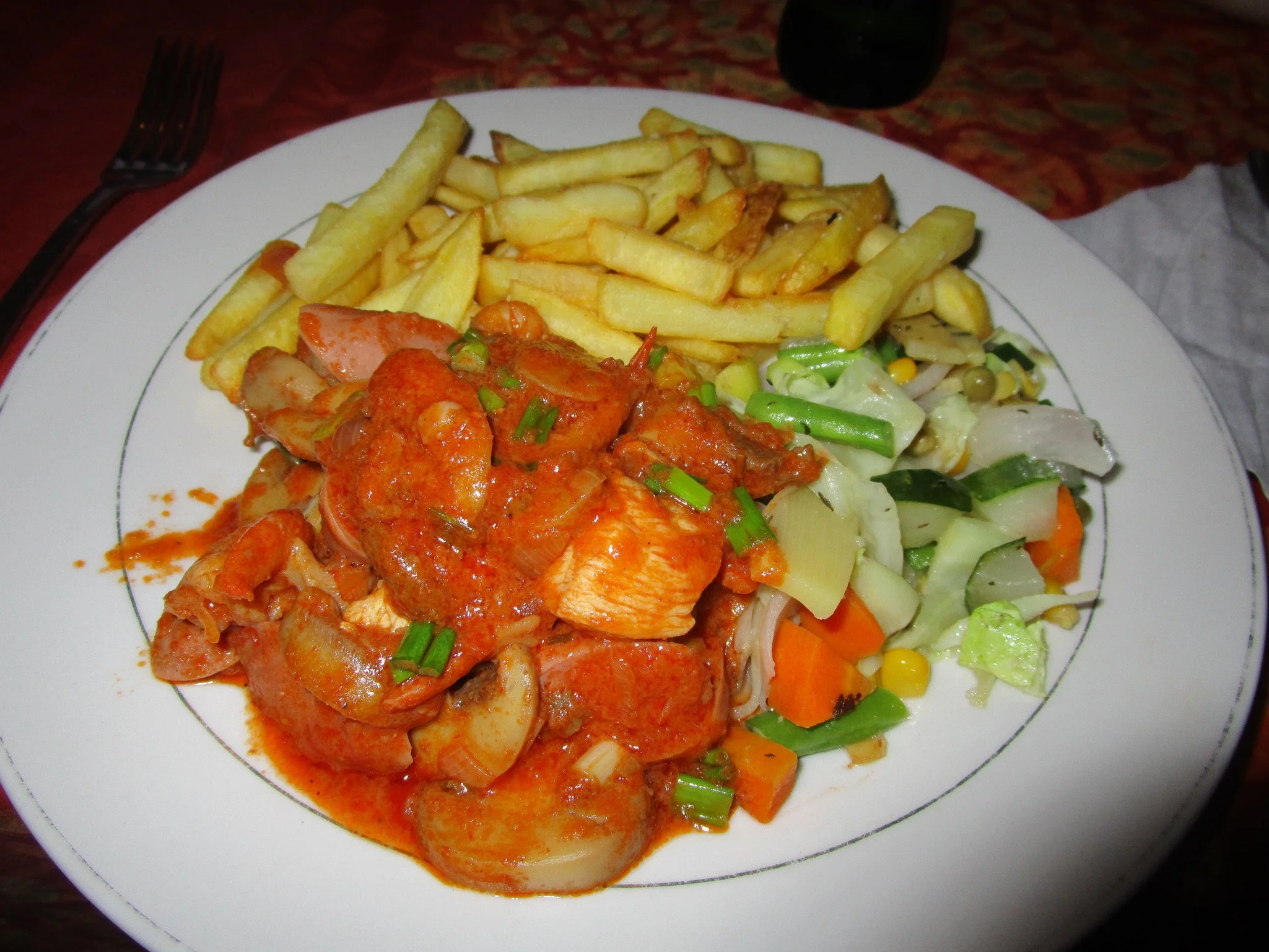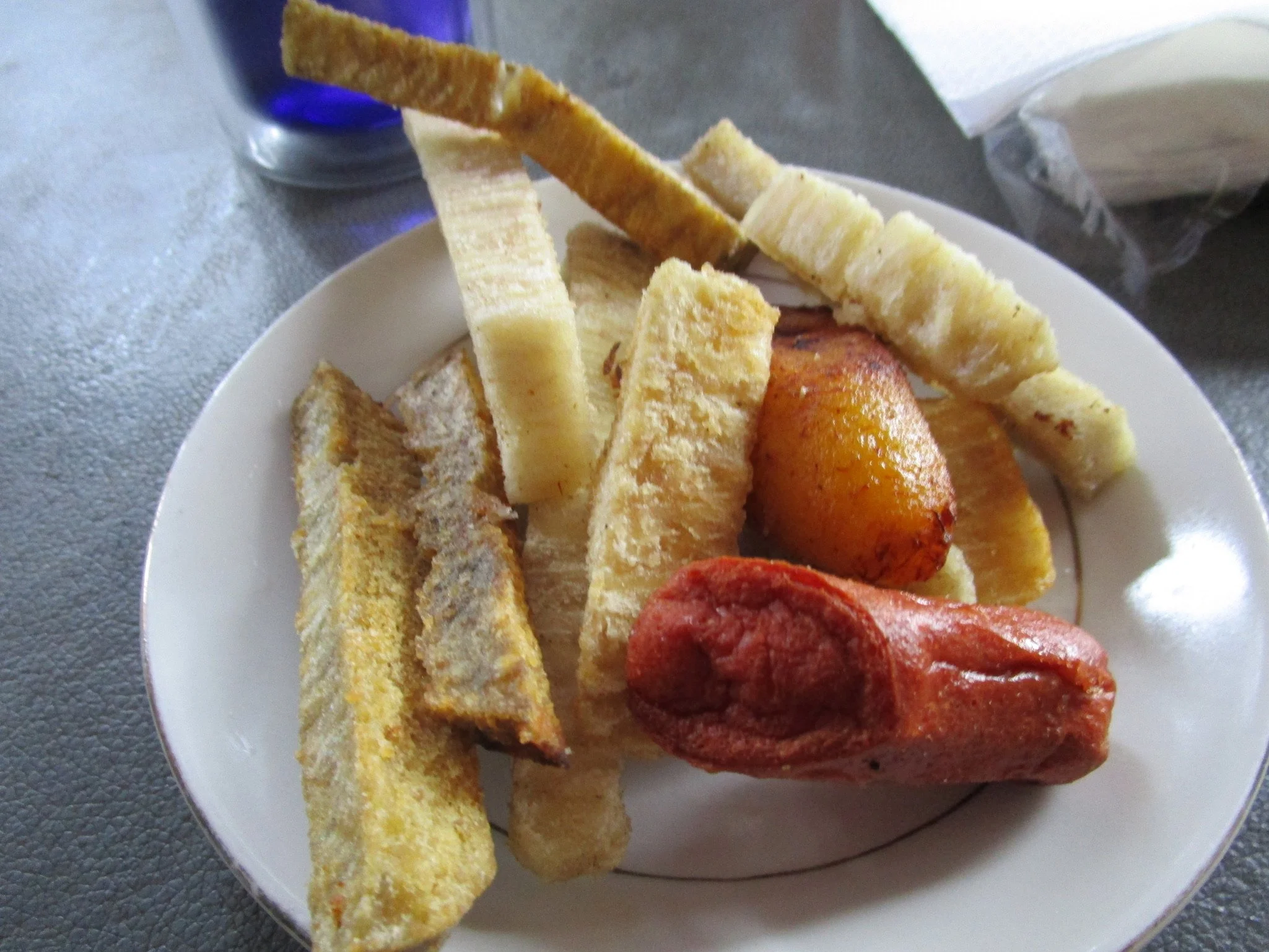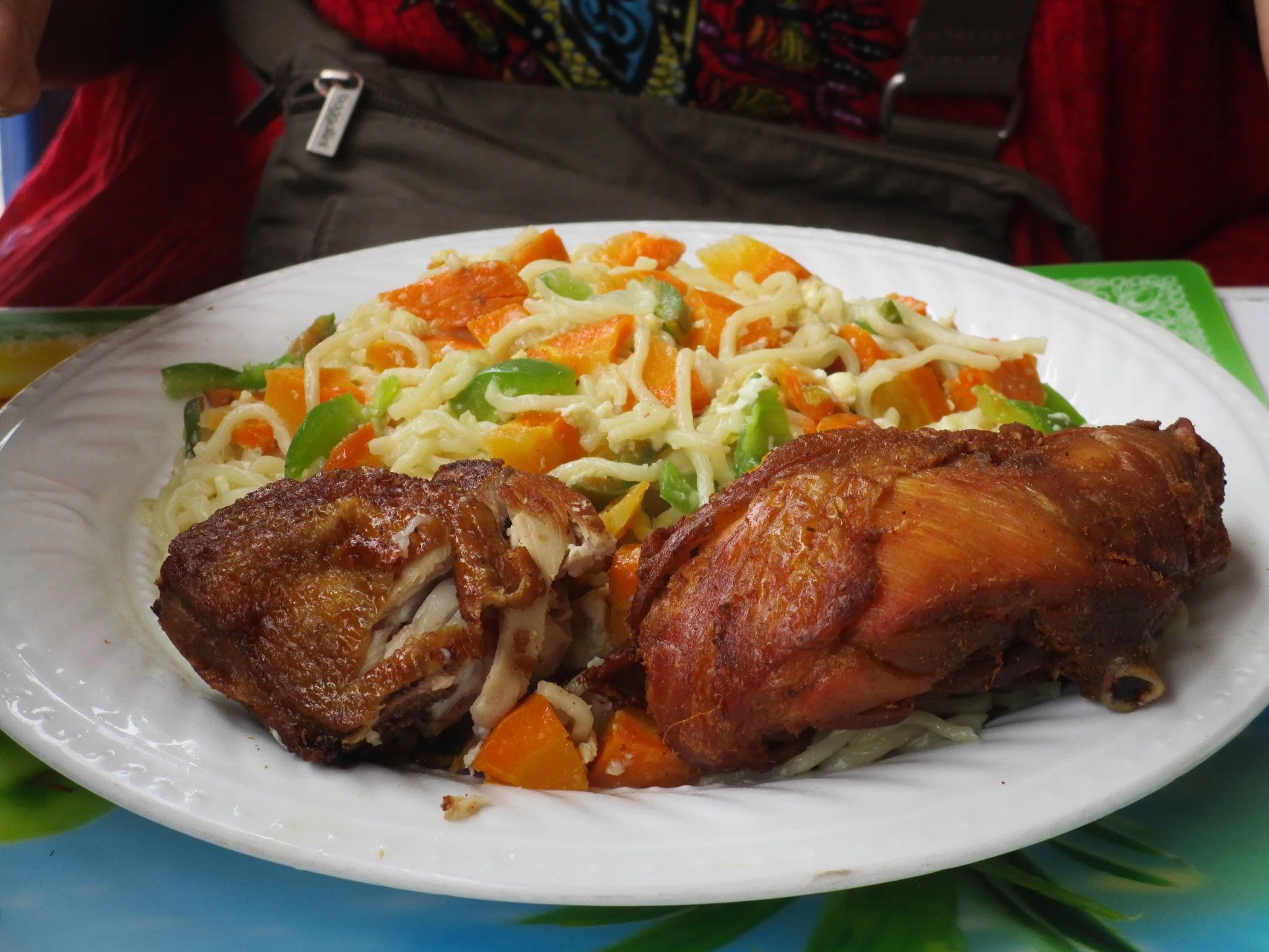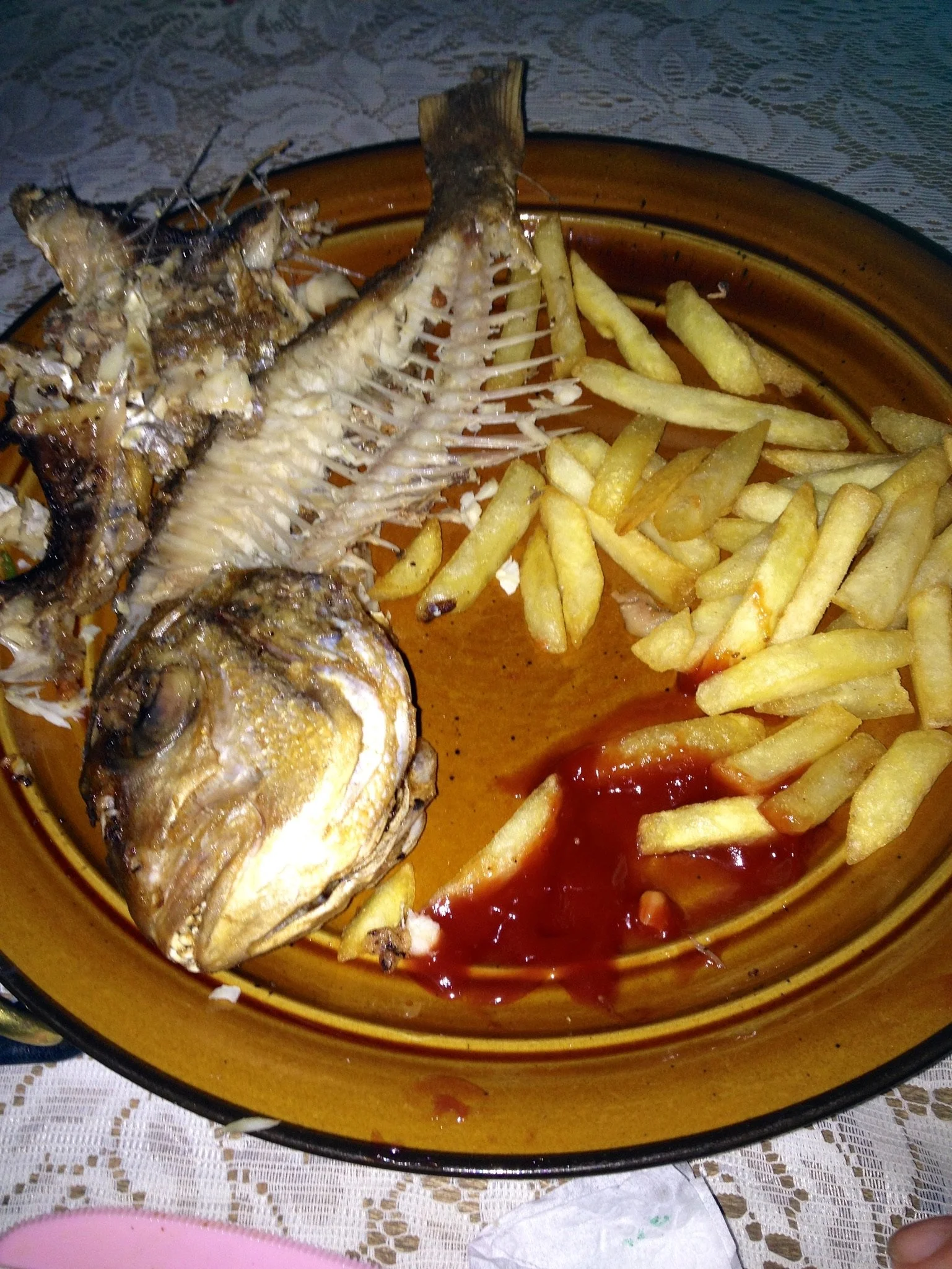Palava(r) Sauce
Palava(r) Sauce:
My best attempt to recreate a recipe at home in New Mexico that took my breath away in Ghana…
(Many thanks to Rita, for her efforts to satisfy finicky “obroni” tummies, for her patience in teaching this obroni how to cook, and for her exemplary culinary skills that kept us fed and happy throughout the program.)
Ingredients:
– 5 pureed ripe tomatoes (mixed with water)
– 4 oz tomato paste
– 1 cup pureed white seeds of undetermined origin [substitute: mix of raw sunflower seeds and pepitas]
– 1 cup blended/pureed small eggplants and spicy green pepper [substitute: green eggplants, flesh only, 1 green Thai chile, a few slices of green pepper]
– 1 cup blended/pureed garlic and onions in water
– 1 small diced yellow onion
– 1 tomato, sliced
– 3 large cubes of maggi shrimp bouillon [substitute fish stock or Thai shrimp paste]
– whole smoked tuna fish [substitute can of tuna in water]
– steamed shredded cocoyam leaves [substitute spinach, as much quantity as all the rest of the food]
– several pinches of Ghanaian pepper [substitute New Mexican red chile]
– 1 cup cooked black-eyed peas
– copious amounts of palm oil [substitute coconut oil]
Instructions:
1. Blend the blended mixtures. Set aside. Cook black-eyed peas. Set aside. Cook cocoyam leaves. Set aside.
2. Sweep the outdoor kitchen area.
3. Set up outdoor charcoal burners with large pots. Fan the flames for a while.
4. Bring oil to a rolling boil. Add diced onion and tomato paste. Cook for a while. Add the sliced tomato and blended tomato. Cook for a while. Add the shrimp bouillon. Cook for a while.
5. Go inside to get the blended seeds.
6. Come back out to realize that someone has absconded with your groundnut snacks. Stage a full-scale inquiry.
7. Add blended seeds. Cook for a while. Add blended eggplant/pepper mix and chile powder. Cook for a while.
8. Dance to the sounds of drumming and cowbell while stirring the pot.
9. Shoo the baby goat away.
10. Start working on picking apart the whole smoked fish. Casually ignore the obroni girl who is trying not to stare too obviously at the eyes of the fish. Offer her the first piece of extracted fish meat.
11. Shoo the rooster away.
12. Keep dancing.
13. Take a break from fish flesh extraction to supervise the pounding of fufu for another dish.
14. Add the fish to the pot in small pieces. Cook for a while.
15. Discover that the baby goat is chewing on laundry. Shoo the baby goat away.
16. Add the black-eyed peas. Cook for a while.
17. Add more chile powder and salt. Add the cocoyam leaves. Cook for a while.
18. Shoo the toddler away. Give the toddler a mouthful of sauce and a handful of rice.
19. Serve palava sauce with garlic rice.
20. Wash all the dishes by hand in the yard.
21. Dance.
22. Start prepping for tomorrow’s dinner.
Cooking takes all day.
***
A little history, from Wikipedia:
Palaver sauce or Palava sauce is a type of stew widely eaten in West Africa…The word “palaver” comes from the Portuguese language and means a talk, lengthy debate or quarrel. It is unclear how this led to the name of the stew. One theory is that when the stew was first made, with long, ropey greens, people would start quarrels by slapping each other with the greens from their stew. Another is that the spices used in the stew mingle together like raised voices in an argument. It has been thought of as having the power to calm tensions, or to cause them. Other names for the dish include Kontonmire, Kentumere, Nkontommire and pla’sas.
Additional Culinary Delights
Jollof Rice, Groundnut Stew, Red-Red, Light Soup, Fufu, and So Much More

